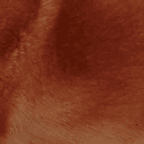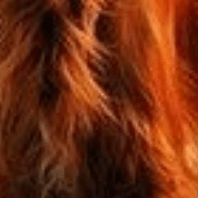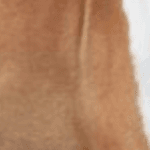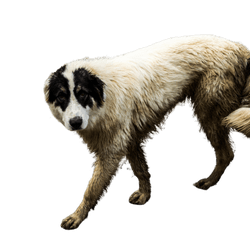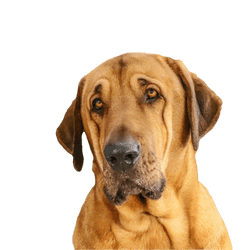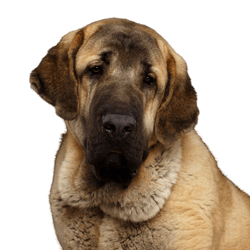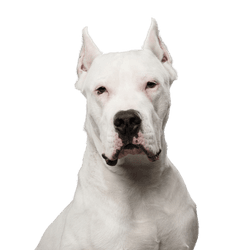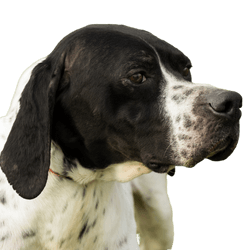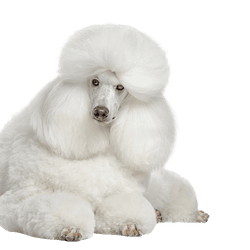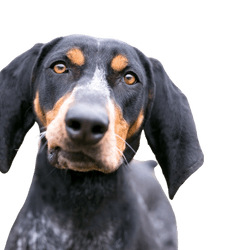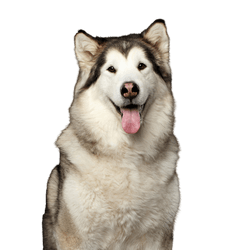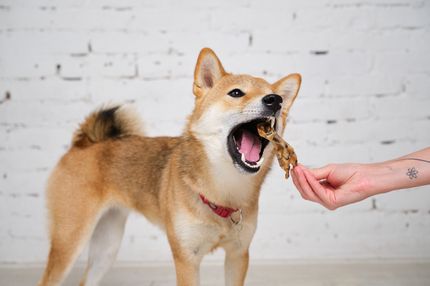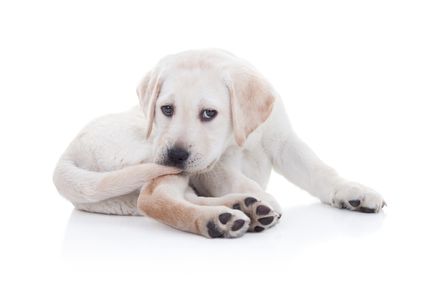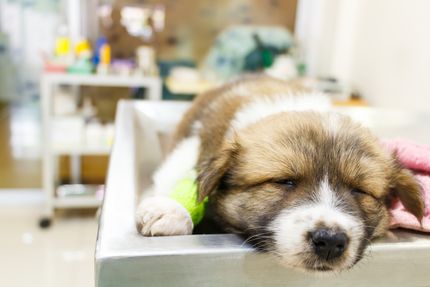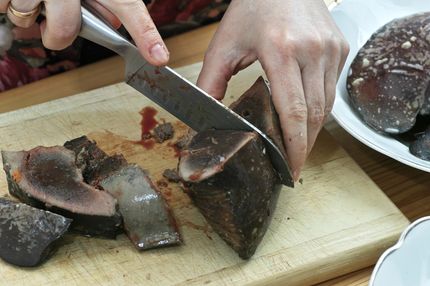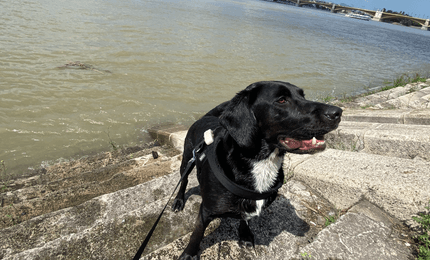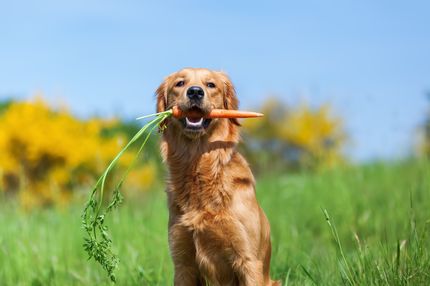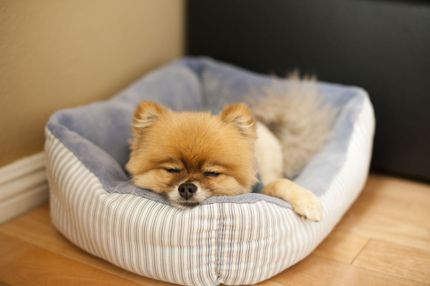Facts & Origin
History and origin of the Dogue de Bordeaux
Originating from France, the Dogue de Bordeaux is one of the oldest dog breeds in this area. It is believed that it goes back to the so-called Alano as a saupacker (wild boar hunting dogs). At that time, in the 14th century, its main use was hunting, but it was also used for fighting with wolves and bears - later it also became an assistant to the slaughterers and was used in dog fights and as a guard dog. At that time it was already called "Great Dane". Three types were distinguished: The Toulouse type, Paris type and Bordeaux type.
At the first French dog show in 1863, the Bordeaux Dogue was already represented as a breed and was also described with its present name ("Dogue de Bordeaux"). As a result, there was also the first publication of a breed standard, written in 1896 by Pierre Megnin in the book "On the nature of true Great Danes". Nevertheless, their population declined sharply, especially during the two world wars, but this was followed by a revival in 1960.
Suitability and keeping
Dogues de Bordeaux are used today as family and guard dogs. As pleasant companion dogs, they do not require hours of jogging to be exercised. Future owners, however, must be prepared for corresponding costs for high-quality food and possible veterinary bills.
Stairs should be avoided due to joint problems, as they are also difficult to carry because of their weight, and damage can occur more quickly.
The Great Dane as a listed dog
It should be noted that the Dogue de Bordeaux is on the list of dangerous breeds in some German states (Baden-Württemberg, Bavaria, Brandenburg, Hamburg) and in Austria (Vorarlberg) and Switzerland (in the canton of Geneva and Ticino).
Therefore, there may be restrictions on keeping as well as increased dog tax. Therefore, before acquiring a Dogue de Bordeaux, it is necessary to check with your municipality in any case.
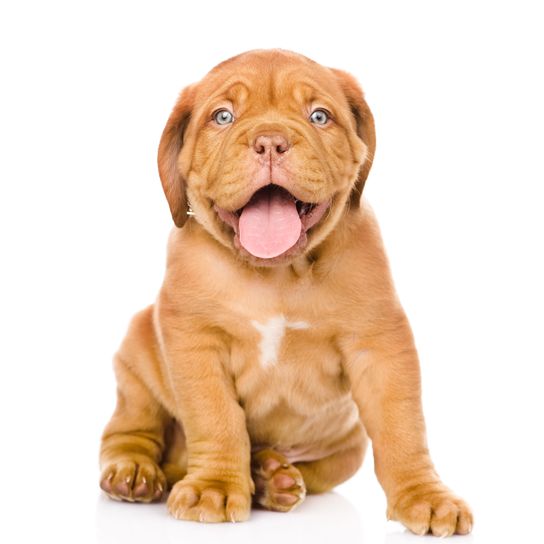
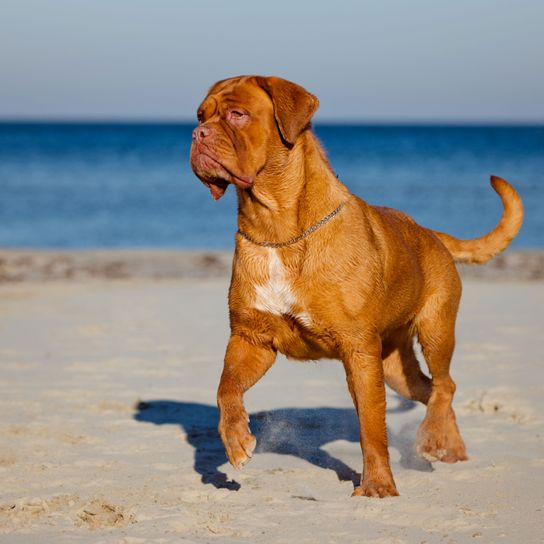
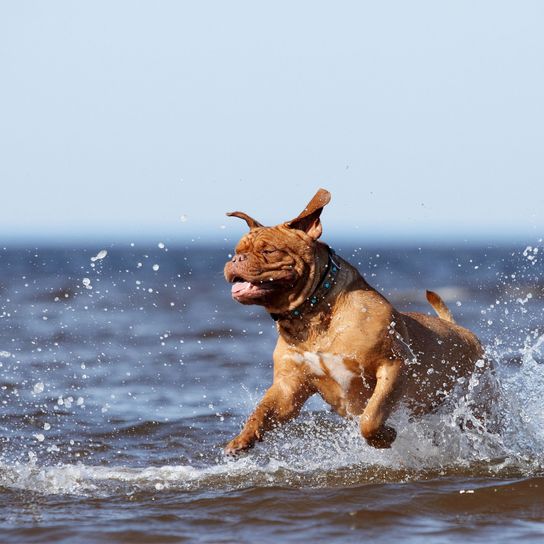
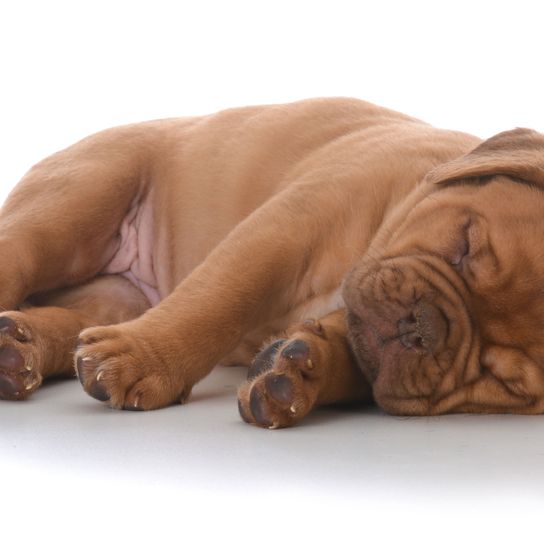
| Alternate Name | French Mastiff |
| Origin | France |
| Life expectancy | 6 - 8 years |
| Care requirements | low-maintenance |
| Activity level | average |
| FCI group | Molossian type |
| AKC group | Herding Group |
| KC group | Pastoral Group |
Dogue de Bordeaux mixes
Attitude, character and temperament of the breed
Typical character traits of the Dogue de Bordeaux
In terms of character, Dogue de Bordeaux is very suitable for guarding: Courageous but calm with enough attention, it performs its task without showing aggressive tendencies. Besides, it is good-natured, intelligent and loyal, which can please the future owners to whom it is affectionate. At the same time, they love their family and are always patient playmates due to the high threshold of irritation for children.
However, according to the breed standard, males have a normally dominant nature. Therefore, care should be taken to ensure that good socialization takes place at an early age.
Education and leadership
Due to its good nature, the Dogue de Bordeaux is basically easy to train, which is necessary for this breed. However, she tends to overthink commands before following them. In any case, you should pay attention to consistency, because this dog breed observes closely and notices easily exploitable weaknesses. Due to their sensitivity, excessive severity should not be used. It is best to visit a dog school already with your Dogue de Bordeaux puppy, in order to enable a safe leadership later on.
Puppies and young dogs are often not able to judge their physical strength properly - especially when dealing with children you should be careful.
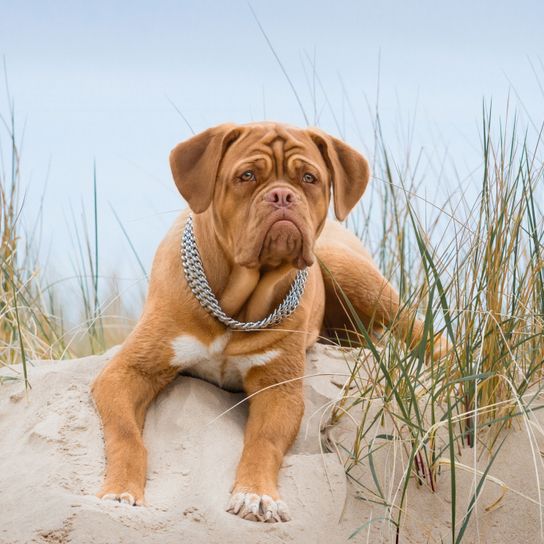
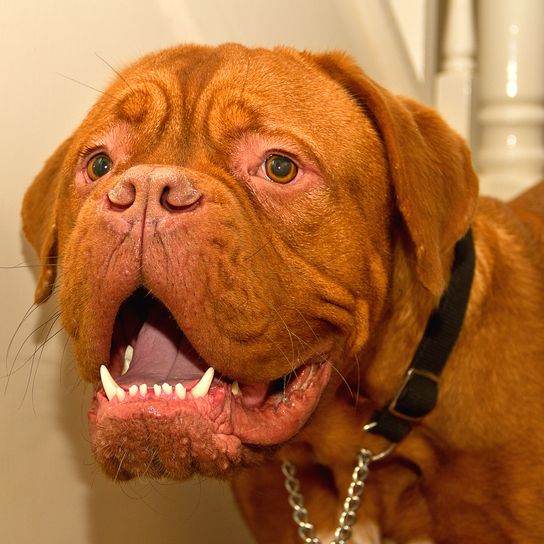
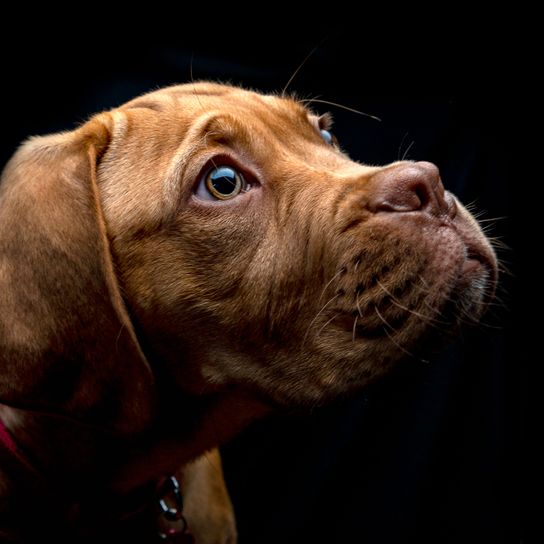
Breed specific diseases of the Dogue de Bordeaux
- Like many large dogs, the Dogue de Bordeaux is susceptible to joint disorders such as hip dysplasia or elbow dysplasia.
- The short nose can lead to manifestations of brachycephalic syndrome.
- Heart problems are also relatively common in the massive Dogue de Bordeaux.
- Other dangers include hypothyroidism, epilepsy and retinal atrophy.
- Gastric torsion is also a major risk.
Care and health maintenance
The life expectancy of a Dogue de Bordeaux is unfortunately only about 8 years.
Keeping it healthy involves relatively uncomplicated care: it is enough to brush the coat every now and then. As with any dog, paws, claws, eyes and ears should be checked regularly, but also pay attention to the teeth. Either you give the four-legged friend regular chewing food or you brush his teeth with a dog toothbrush. When feeding, especially for puppies, you should pay attention to high quality and that it is not too rich in protein, so that the puppy does not grow too fast. After eating, the dog should be able to rest sufficiently - otherwise there is a risk of gastritis.
When it comes to exercise, a healthy measure is required: it should not put too much strain on the joints, but at the same time, sufficient exercise is necessary.
Purchase, breeding and adoption of a Dogue de Bordeaux
When buying a Dogue de Bordeaux, pay very close attention to a reputable breeder, especially because of the already short life expectancy of this dog breed. Be sure to get the parent's papers to show that they are HD free and otherwise healthy as well. Also, make sure they don't look too massive so as not to support any possible torture breeding.

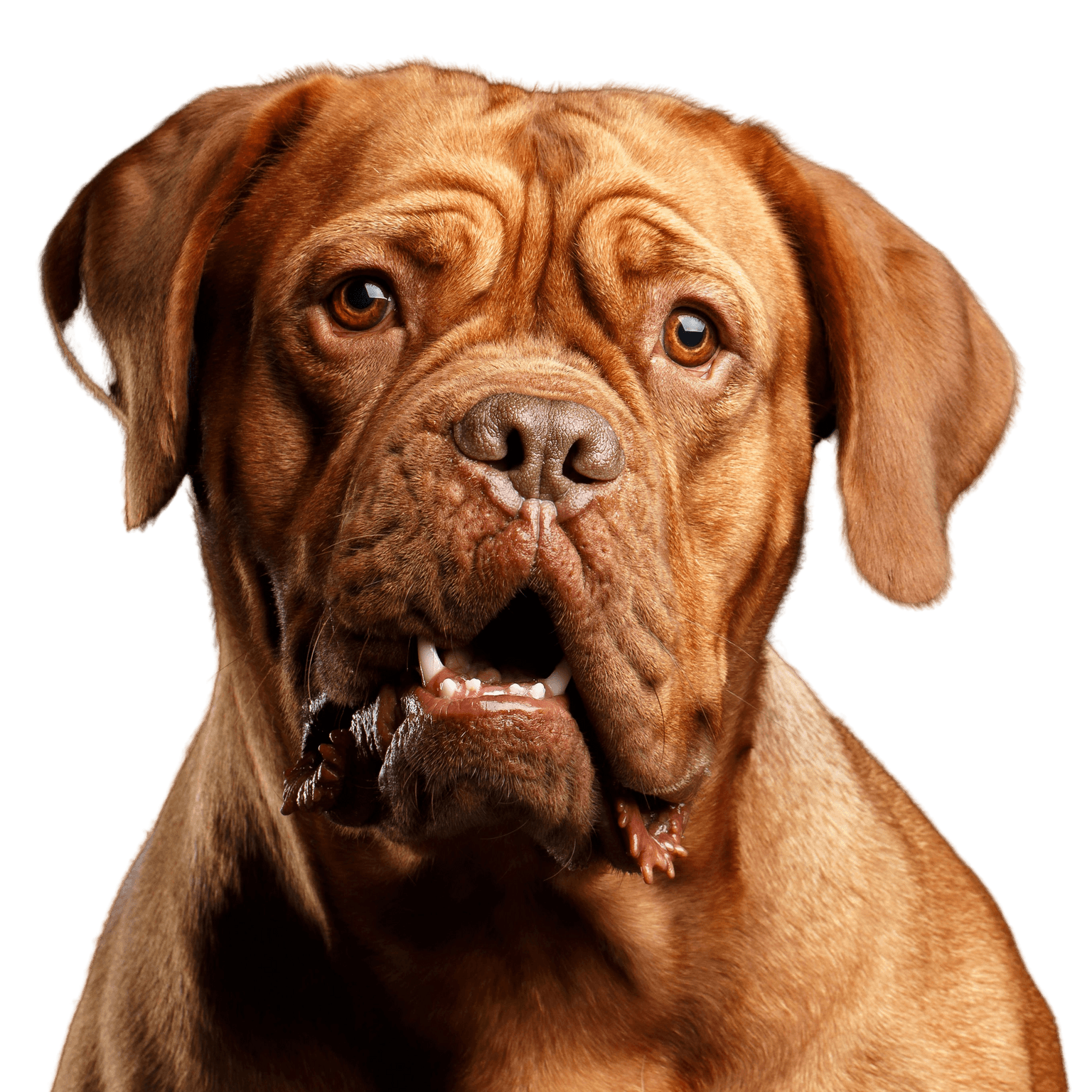
Breed characteristics of the Dogue de Bordeaux
The Dogue de Bordeaux is classified by the FCI as Group 2(Pinscher and Schnauzer- Molossoid - Swiss Mountain and Cattle Dogs ), Section 2.1(Dogue type dogs). No working test is required.
Thesizeof a breed specimenmust beapproximatelythe head circumference, reachingbackreach a height at the withers of about60-68cm and bitches 58-66cm. For breeding, deviations of 1cm downwards or 2cm upwards are also possible. For this dog breed only a minimum weight of 50kg for males and 45kg for females, which should have the same but less pronounced characteristics, is prescribed.
The gait
For a Molossian, the Dogue de Bordeaux moves quite smoothly. At a walkthe gait is free, supple and close to the ground. There is a good thrust from the hindquarters hindquarters, resulting in a goodforward stride of the front limbs,especially at the trot (the preferred gait).As the trot quickens, the dog tends to lower the head, thus the upper the dog tends to lower the head; thus, the upperüforward and with a and with an expansiveof the front limbs, the front feet move front feetfeet move closerto the median plane.
This breed of dog also has a short canter with an important vertical movement. At short distancesthey arecapable ofhighspeed bylightning-like acceleration close to the ground .
The head
Dogues de Bordeaux have a powerful, angular, broad but rather short head, which has the shape of a trapezium when seen from the front and from above, and is characterized by symmetrical folds, which may move according to the dog's attention, on each side of the median furrow. The furrowrunning from the innercorner of the eye tothe corner of the muzzle is typical. However, if there is a furrow running from the outercorner of the eye to the corner of the muzzle or dewlap on both sides, it should be discrete. There is also a forehead furrow which is deep and decreases towards the back of the head. The stop is very pronounced and forms an almost right angle (95°-100°)with thebridge of the nose.
Thelongitudinal axes of the craniumand the bridge of the nose are convergent(towards the front ). The foreheaddominates the face but doesnot protrude above it, nevertheless showing more width than height. In males the circumference of the skull measured at the widest point is approximately equal to the height at the withers, in females it is slightly less .In both, the action is determined by thestrong development of the temporal bone, browand zygomatic arches and by the mutual spacing of the mandibular branches , the upper region of the skull being slightly convex from one side to the other.
The muzzle
Dogues de Bordeaux have a broad nose with well openednostrils, whichshould bewellpigmented according tothe mask. A turned upnose(snub nose) is permitted in breeding specimens if it is not placed towards the eye zurűck. Due totheverystronglydevelopedmusculature
the cheeks protrude .
The strong, rather short muzzle itself shows some width and fleshiness, but doesnot appear bloated undertheeyes.Itsupperboundary line is veryslightly concave withmoderatelyconspicuous folds, andthewidth decreases only slightly toward the tip of the muzzle, resulting in an essentiallysquare shape when viewed from above .Towards the upper region of the skull, the course of the muzzle forms a very obtuseangle , opening upwards.When the head is carried horizontally, the end of themuzzle, which is blunt at its base,thickandbroad, projectsbeyonda tangent to be appliedverticallyto the nose leather.
The Dogue de Bordeaux has a strong, broad fore-bite, which is a breed characteristic. The dorsal side of the lower incisors stands without contact in front of the front of the upper incisors.The lower jawis curved upwards. The chin is well defined and must not protrude exaggeratedly under the upper lip, nor be be covered by it. A special development of the canines, the lower row of whichshould beset wide apartandslightlycurved, is desired. The incisors, especially in the lower jaw, should form an apparently straight line.
Your Upper lip is thick, slightly pendulous but retractable. Seen from the side viewed, the lower line is arched. They cover the sides of the lower jaw.In front, the edge of the upper lip is in contact with the lower lip. with the lower lip, then slopes downward on both sides, forming a broad a broad, inverted "V".
The Eyes & Ears
This dog breed, with its outspoken expression, has oval eyes that are set wide apart.Thedistance between thetwoinnercorners of the eyelidsisapproximately twice thelength of the eyes(palpebral fissure). A hazel to dark brown eyecolor is desired in dogs with a black mask; however, a less dark eye color is acceptable indogs without a mask or with a brown mask .
The relatively small, slightly rounded ears are slightly darker than the rest of the coat color. At the base, which is quite high (at the level of the upper skull line), the front edge is slightly raised; overall, this gives further emphasis to the broad skull. From there they fall without hanging limply. The front edge of the ear rests against the cheek when alert, but the ear must not reach further than the eye .
The torso
The very strong, muscular neck, the upper profile line of which is convex, should be almost cylindrical and have abundant have skin which is supple, loose and soft. The average neck circumference is almost equal to the circumference of the head. It is separated from the head by a slightly accentuated and slightlyslightly curved transverse furrow.The well defined dewlap starts in the throat area and forms folds to the to the chest without hanging down excessively. The neckmerges into the shoulders withoutrn. Basically shows a firm upper profile line with well defined withers and a broad and muscular back, which merges into equally broad loins, which are short and firm. The croup slopes moderately bi to the base of the tail.
The opposite, strong chest should be long, deep and broad down to above the elbows.There is also abroad,strongforechestwith adownwardconvexlower boundary line. The ribsof this dog breed reachwelltodownandare goodgewölbt,butnot barrel-shaped. The chest circumference must exceed the height at the withers by 25 cm to 35 cm.There is anarchinglinefromthewell let downchesttothefairlyhigh,firm belly. It appears neither pendulous nor too high.
The tail
Carried very thick and low at the base, the tip of the tail reaches preferably to the hock, but not beyond. to the hock joint, but not beyond.In resting position it hangs and usually rises from this position 90° to 120° when the dog is in motion. 120° when the dog is in motion, without bending or curling over the back. bending over the back or curling up. A kinked or knotted tail, despite its pliability, is not permitted in breeding.
The limbs
Basically, the Dogue de Bordeaux has a strong bone structure with very muscular limbs. The shoulder is strong, with prominent muscles and the scapula moderately oblique(about45° tothehorizontal). Theanglebetween the scapula and the humerus should be only slightly above 90° .The elbow is in the axis of the body, neither too close to the thoracic wall nor turned out. Seen from the front, the forearm is straight or slightly inclined inward from the outside, so that it slightly approaches the median plane (this isespecially truein dogs with a very broad chest) .When viewedfrom the side, however, it is vertical. The fore tarsus isstrong and slightly oblique in profile. Seen from thefront, sometimes even turned out slightly to compensate for the slight inwardslope ofthe upper arm.
Seenfrombehind, the hindlimbsareparalleland vertical and give a very strong impression, although the hindquarters are slightly less broad than the forequarters. The thigh is strongly developed and thick, with visible muscles. The stifle joints should be on or slightly off a plane parallel to the median plane, while the relatively short, muscled lower thigh extends well down. The short, dry hock, on the other hand, has a moderately open angle. The strong hind pastern should not have dewclaws.
The front feet of this dog breed are strong,withclosely knittoes and curved, equally strong nails and well-developed, soft pads.Despite its heavy weight, the Great Dane is a good toe walker. The hind feet should be slightly longer than the forefeet, but should also have closely knit toes.
The coat
The thick skin should besufficiently loose, without excessiveexcessivewrinkles, and be covered with thin, shortthin, short and soft to the touch coat.
In terms of color, this breed is usually solid in all shades of fawn from mahogany to isabelline. Thereby alwaysto a good pigmentation is paid attention. Few white spots on the chest and at the ends of the limbs are permitted.
Also typical of the Dogue de Bordeaux is the mask, if it is not m fawn specimens with red appearing skin and equally reddish nose:
- Black mask: Often the mask is only slightly extended,it may not extend into the cranial region. A slight black shading on the skull, ears, neck and the top of the top of the body is permitted. The nose is black.
- Brownmask(olddesignation:"red " or"brown-black"): The nose sponge is brown, as are the eyelid margins and thelipmargins. Aslightnon-overlapping brown shading is permitted: each hair has a fawnor sandzoneand a brownzone. In this case,the inclined parts of thebodyareof a lighter color.
| Fur length | short |
| Fur | flat coated |
| Ear shape | Tilt-ear |
| Tail | lang |
| Anatomy | muscular |
| Size ♀ | 57 - 68 cm |
| Weight ♀ | 45 - 60 kg |
| Size ♂ | 60 - 67 cm |
| Weight ♂ | 45 - 60 kg |
| Suitable For | - |
Colors



Known Diseases
Hip dysplasia (HD)
Hip dysplasia (HD) is a genetic condition in dogs where the hip joint is not shaped properly. This leads to pain, stiffness and restricted movement.
Elbow dysplasia (ED)
Elbow joint dysplasia is a chronic disease complex of the elbow joint of fast growing dog breeds.
FAQ
-
Yes, the Dogue de Bordeaux is a listed dog in Germany, Austria and Switzerland and is considered dangerous. Sometimes it is also falsely called a fighting dog.
-
A Dogue de Bordeaux puppy costs about 1500-2000 euros.
-
Since the Great Dane was used to stand and win in battle against game, bears and wolves, the dog is potentially very strong and considered dangerous.
-
Medieval Alan hounds and Saupackers are among their ancestors.
-
Unfortunately, a Dogue de Bordeaux lives on average only 6-8 years.
-
Yes, a Great Dane is considered relatively expensive. Besides the purchase (1600 - 2000 €), you must also be able to finance the running costs, initial equipment and possible veterinary bills.
- There are many dubious breeders who practice torture breeding with Great Danes. This leads to a large number of health problems, such as brachycephalic syndrome.







